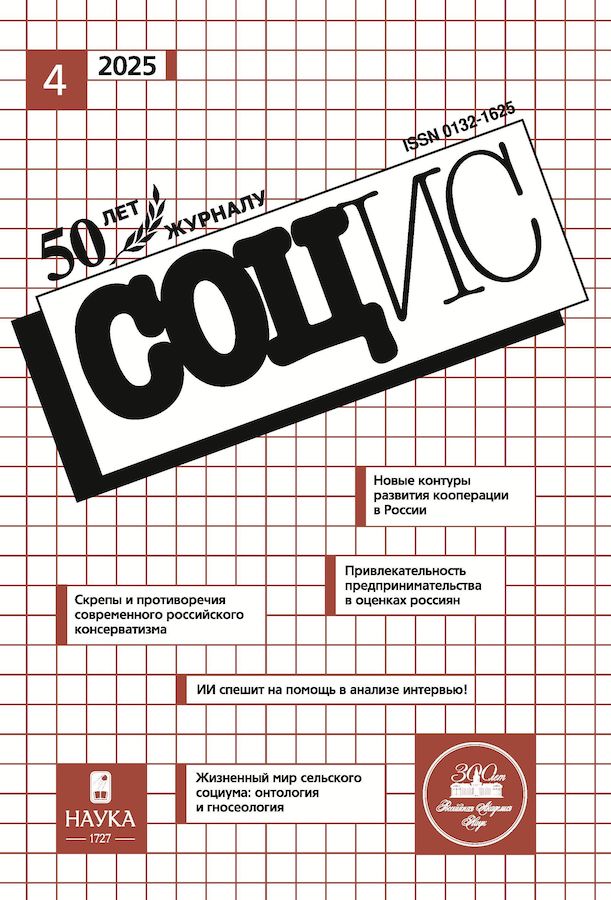Russian retail investors in the digital realm: group characteristics
- Авторлар: Iudin I.B.1
-
Мекемелер:
- HSE University
- Шығарылым: № 4 (2025)
- Беттер: 140-146
- Бөлім: FACTS. COMMENTS. NOTES
- URL: https://rjmseer.com/0132-1625/article/view/684506
- DOI: https://doi.org/10.31857/S0132162525040135
- ID: 684506
Дәйексөз келтіру
Аннотация
The notion of market devices when applied to digital investment technologies suggests that they not only construct the stock market, but influence individuals’ behaviors as well. Current article aims to outline the types of Russian retail investors (lay participants of the stock market) based on the digital technologies and tools they use, as well as to assess how different these types are in terms of their investment performance. Investment behavior is viewed as a combination of digitalized (1) trading and (2) information search and analysis practices. Data comes from the third wave of the Monitoring Study of the Economy and Society’s Digital Transformation (ISSEK HSE University, 2024, N = 10038). The sample is comprised of individuals who own stocks, bonds and/or ETFs (n = 312). K-means cluster analysis suggesting two types of retail investors: (1) active (36% of the sample), who engage in most trading and information search and analysis practices, and (2) passive (64%), who mostly trade via mobile apps, yet show little to no interest in the market information. Overall, both types primarily engage with mobile investment apps when trading, and with social networks when searching for market information. It is also found that active investors are more likely to assess their investment performance as higher than market average. This can result from the use of a wider range of digital investment technologies, which, being market devices, affect investment behavior making it more economically rational.
Негізгі сөздер
Толық мәтін
Авторлар туралы
Ivan Iudin
HSE University
Хат алмасуға жауапты Автор.
Email: iyudin@hse.ru
Junior Research Fellow at the Institute for Statistical Studies and Economics of Knowledge, Lecturer and Doctoral Student at the Department of Economic Sociology at the Faculty of Social Sciences
Ресей, MoscowӘдебиет тізімі
- Преснякова Л. А. К вопросу о будущем фондового рынка в России: перспективы и основные ограничения развития (комментарий к статье Д. О. Стребкова) // Экономическая социология. 2007. Т. 8. № 5. С. 40–54. doi: 10.17323/1726-3247-2007-5-40-54. [Presnyakova L. (2007) To the Question on Stock Market Development in Russia: Perspectives and Basic Restrictions (Comments to D. Strebkov’s Paper). Ekonomicheskaya Sotsiologiya [Journal of Economic Sociology]. Vol. 8. No. 5: 40–54. doi: 10.17323/1726-3247-2007-5-40-54. (In Russ.)]
- Смелова А. А. Социальные исследования финансов как новый вектор для социологического изучения современного общества // Социологические исследования. 2024. № 8. С. 22–36. doi: 10.31857/S0132162524080029. [Smelova A. (2024) Social Studies of Finance as a New Vector for Sociological Research of Modern Society. Sotsiologicheskie Issledovaniya [Sociological Studies]. No. 8: 22–36. doi: 10.31857/S0132162524080029. (In Russ.)]
- Старшинов А. Н., Мюллер Д. Г. Об отдельных недостатках государственного регулирования рекламы рынка ценных бумаг в России // Казанский социально-гуманитарный вестник. 2022. Т. 4. № 55. С. 69–73. doi: 10.26907/2079-5912.2022.4.69-73. [Starshinov A. N., Muller D. G. (2022) About Some Shortcomings of The State Regulation of Advertising of the Securities Market in Russia. Kazanskij Socialno–Gumanitarnyj Vestnik [The Kazan Socially–Humanitarian Bulletin]. No. 4(55): 69–73. doi: 10.26907/2079–5912.2022.4.69–73. (In Russ.)]
- Belousova V., Chichkanov N. (2015) Mobile Banking in Russia: User Intention towards Adoption. Foresight and STI Governance. Vol. 9. No. 3: 26–39. doi: 10.17323/1995-459x.2015.3.26.39.
- Freibauer J., Grawert S., Rieger M. O. (2024) The Effects of Trading Apps on Investment Behavior over Time. The European Journal of Finance: 1-25. doi: 10.1080/1351847X.2024.2401604.
- Gurun U. G., Stoffman N., Yonker S. E. (2018) Trust Busting: The Effect of Fraud on Investor Behavior. The Review of Financial Studies. Vol. 31. No. 4: 1341–1376. doi: 10.1093/rfs/hhx058.
- Knorr-Cetina K. (2003) From Pipes to Scopes: The Flow Architecture of Financial Markets. Distinktion: Journal of Social Theory. Vol. 4. No. 2: 7–23. doi: 10.1080/1600910X.2003.9672857.
- Muniesa F., Millo Y., Callon M. (2007) An Introduction to Market Devices. The Sociological Review. Vol. 55. No. 2_suppl: 1–12. doi: 10.1111/j.1467-954X.2007.00727.x.
- Park J., Konana P., Gu B., Kumar A., Raghunathan R. (2010) Confirmation Bias, Overconfidence and Investment Performance: Evidence from Stock Message Boards. SSRN Scholarly Paper ID1639470. doi: 10.2139/ssrn.1639470.
- Trehan B., Sinha A. K. (2021) A Study of Confirmation Bias among Online Investors in Virtual Communities. International Journal of Electronic Finance. Vol. 10. No. 3: 159–179. doi: 10.1504/IJEF.2021.115647.
Қосымша файлдар









